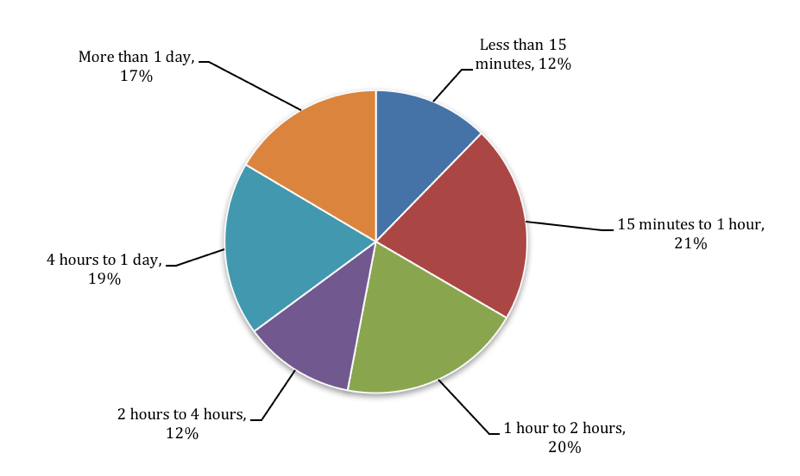
Image by: ronniechua, ©2017 Getty Images
Content is so important that it could potentially stop your processes and freeze the business in its tracks. That’s right. I said it.
In a recent AIIM Industry Watch report titled “2017 State of Information Management: Are Businesses Digitally Transforming or Stuck in Neutral?” not only did respondents indicate that their content and content systems are important to them, but 12% reported that these systems are so important that “serious disruption in their business would occur within 15 minutes if a major outage were to happen with their content application.” This percentage expands to one-third of respondents when looking at a downtime of one hour.

In your own business, just imagine how tightly connected your processes are to content or your content management systems, file shares, and other repositories where business-critical information resides. What would the impact be if these systems were suddenly unavailable even for a short period of time? What would you do?

In a recent AIIM report, respondents reported that serious disruption to their business would occur due to an outage of a content application.
Source: AIIM AIIM Industry Watch, “2017 State of Information Management: Are Businesses Digitally Transforming or Stuck in Neutral?”
In your own business, just imagine how tightly connected your processes are to content or your content management systems, file shares, and other repositories where business-critical information resides. What would the impact be if these systems were suddenly unavailable even for a short period of time? What would you do?
Where to Begin
This is where I like to talk about disaster preparedness. Now, I know you can't prevent every possible thing from happening. For those who study chaos theory, in short, it suggests the only thing that is predictable is that life and all things in this universe are unpredictable. Therefore, we must prepare, but we must also understand that we will never be fully prepared.So, where should you begin? I like to begin with vital information and processes. If chaos struck, what would it take—at a minimum—to get your business up and running again? This means you must identify your core business processes, information, and resources, then prioritize which need to be restored, and in what order. For example, does finance need to come online before human resources (HR) and marketing? Does manufacturing need to come back online before sales? What are the essential business segments you need for cash flow and to meet your customer needs? Once you address these areas, what if the technology is not fully functioning to support it all? Do you have alternate plans? Could you operate for a short period of time without the underlying technology, and if so, how?
In My View
Many companies talk about having a disaster recovery plan but have never thought about full preparedness. Living in the land of hurricanes, this is something we prepare for annually with drills, mock disasters, and all teams simulating their roles should chaos strike. If traffic lights are out, humans are put in place to direct traffic. If the power is out, people prepare by keeping a supply of batteries and candles. If public water supplies are unfit for human consumption, bottled water is stored and chlorinated swimming pools serve as a back-up supply.The key is to think ahead and to understand that content and process are tightly connected. While content and process are often viewed independently of each other, "trailblazing companies," those who are ahead of the rest, recognize that they are intertwined and, as such, plan for their interaction. Don’t wait until it is too late.
Bob Larrivee is Vice President and Chief Analyst of Market Intelligence at AIIM and an internationally recognized subject matter expert and thought leader with over 30 years of experience in the fields of information and process management. Follow him on Twitter @BobLarrivee.
















